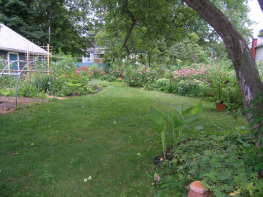
Our main objective is to increase pollinator habitat by enhancing, protecting and creating new habitats for the 400 species of native bees in New England. Yes bees, because they are the most efficient pollinators. The 2006 status report by the National Academy of Science is a wake up call.
This report points to the need for more research yet time is getting short — and a wave of citizen scientists, aligned with universities and botanical gardens, etc., are starting to gather essential data needed. No time like the present!
The executive summary:
“Pollinators–insects, birds, bats, and other animals that carry pollen from the male to the female parts of flowers for plant reproduction–are an essential part of natural and agricultural ecosystems throughout North America. For example, most fruit, vegetable, and seed crops and some crops that provide fiber, drugs, and fuel depend on animals for pollination. This report provides evidence for the decline of some pollinator species in North America, including America’s most important managed pollinator, the honey bee, as well as some butterflies, bats, bees and hummingbirds. For most managed and wild pollinator species, however, population trends have not been assessed because populations have not been monitored over time, (like honeybees have)…. This report outlines priorities for research and monitoring that are needed to improve information on the status of pollinators and establishes a framework for conservation and restoration of pollinator species and communities.”
One thing is true, creating more habitat does a world of good.
